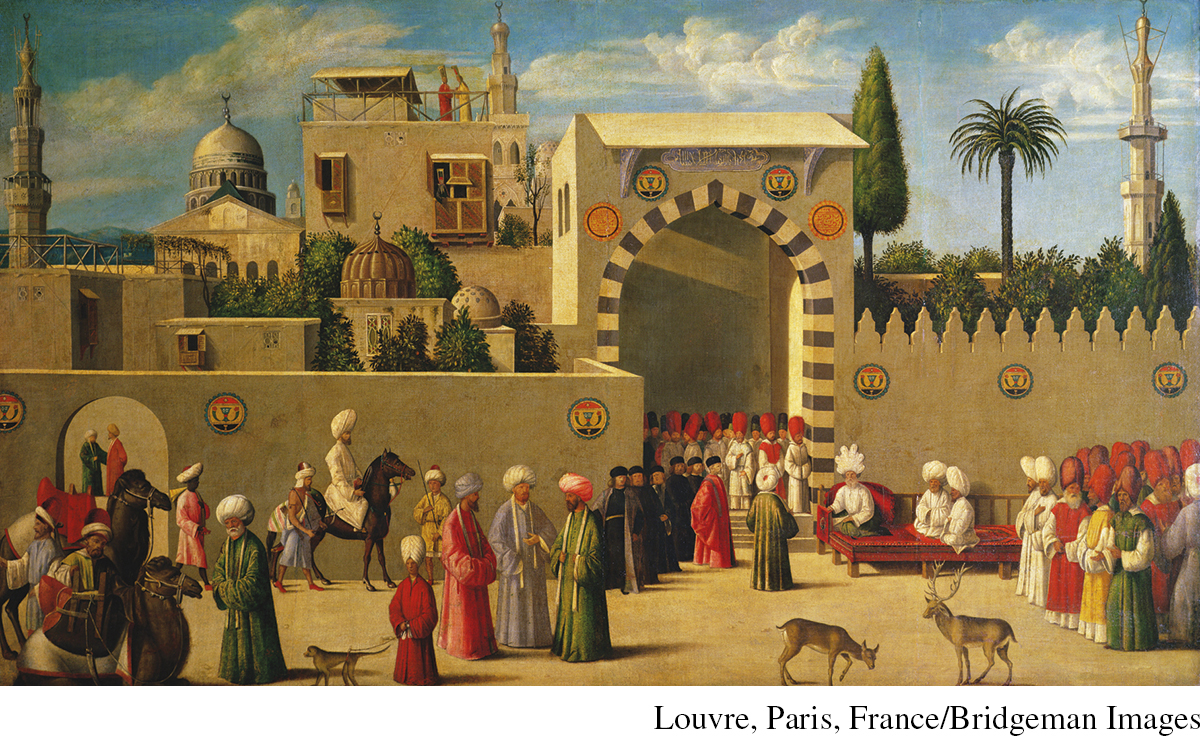Ways of the World with Sources
Printed Page 539
Source 12.2
The Venetian Ambassador Visits Damascus
Venice had long been the primary point of commercial contact between Europe and the East and the source of the much-
Source 12.2, painted by an anonymous Venetian artist in 1511, expresses this intense interest in the Islamic world. The setting is Damascus in Syria, then ruled by the Egyptian Mamluk regime. The local Mamluk governor of the city, seated on a low platform with an elaborate headdress, is receiving an ambassador from Venice, shown in a red robe and standing in front of the governor. Behind him in black robes are other members of the Venetian delegation, while in the foreground various members of Damascus society—

- What impressions of the city and its relationship with Venice does the artist seek to convey?
- How are the various social groups of Damascus distinguished from one another in this painting? What does the very precise visual description of these differences suggest about Venetian understanding of urban Mamluk society?
- What does the total absence of women suggest about their role in the public life of Damascus?
- How would you know that this is a Muslim city? What role, if any, does religion play in this depiction of the relationship between Christian Venice and Islamic Damascus?